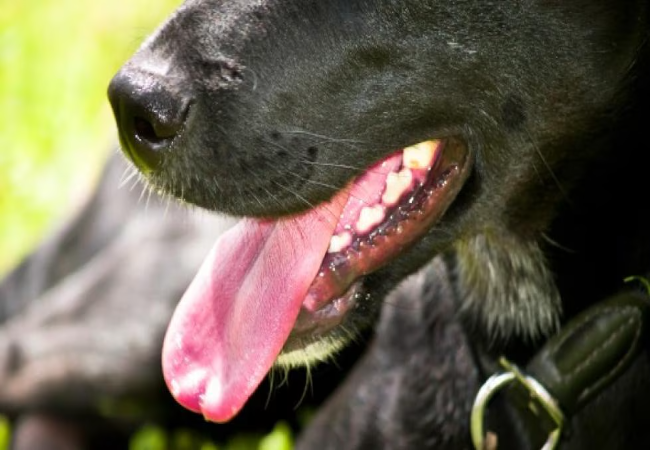Vet’s 2025 Guide to Canine Difficulty Swallowing (Dysphagia) 🐶✨🩺

In this article
Vet’s 2025 Guide to Canine Difficulty Swallowing (Dysphagia) 🐶✨🩺
By Dr. Duncan Houston BVSc
💡 What Is Dysphagia?
Dysphagia means difficulty swallowing. In dogs it can affect one or more phases of swallowing:
- Oral dysphagia: problems chewing/propelling the bolus in the mouth.
- Pharyngeal dysphagia: disorders in the throat during the swallow reflex.
- Cricopharyngeal dysphagia: dysfunction at the junction of the throat and esophagus.
- Esophageal dysphagia: issues moving food down the esophagus into the stomach.
👀 Recognizing the Signs
Common clinical signs include:
- Oral: Dropping food, reluctance to open mouth, excessive drooling.
- Pharyngeal: Gagging, retching, coughing during meals, nasal discharge.
- Esophageal: Regurgitation of undigested food soon after eating, weight loss, and aspiration pneumonia risk.
- Cricopharyngeal: Multiple swallow attempts, coughing up food after.
- Systemic signs: Weight loss, dehydration, fever if aspiration pneumonia ensues—dysphagia is not an emergency but aspiration pneumonia is.
⚙️ What Causes It?
Dysphagia can result from:
- 🔧 Mechanical/structural: tumors, strictures, abscesses, foreign bodies, elongated soft palate (brachycephalic dogs).
- 🦴 Dental/jaw pain: fractures, abscesses, arthritis.
- 🧠 Neuromuscular/neurological: myasthenia gravis, polymyositis, cranial nerve injury, stroke, laryngeal paralysis/megaesophagus.
- 🚑 Inflammatory/infectious: pharyngitis, tonsillitis, esophagitis.
- 💤 Congenital disorders: cricopharyngeal achalasia, accessible in some breeds.
🧪 How Is It Diagnosed?
- History & exam: noting onset, type of dysphagia, accompanying symptoms.
- Bloodwork & baseline tests: CBC, biochemistry, T4, acetylcholine receptor antibody titer for myasthenia gravis, infectious tests.
- Oral/jaw imaging: skull X-rays, CT, or ultrasound to check for structural causes.
- Contrast imaging or fluoroscopy: video swallowing studies to assess swallowing motion.
- Endoscopy: direct look or removal of foreign bodies, take biopsies if needed.
- Neurological & systemic imaging: CT/MRI or chest imaging to check for stroke, tumor, megaesophagus, aspiration pneumonia.
🛠 Treatment & Care Plans
1. Address Cause:
- 🔧 Remove obstruction—surgical foreign body removal, tumor debulking, stricturoplasty.
- 🦴 Treat dental problems—extractions, abscess drainage.
- 🧠 Treat neuromuscular issues—pyridostigmine for myasthenia gravis; immunosuppression for polymyositis.
- Support elongated palate with cool environment, possible resection surgery.
2. Feeding Support:
- 🍲 Oral/pharyngeal: Softened, moist food or puree; feed in upright/head‑extended position; hand‐fed controlled boluses.
- 🪑 Cricopharyngeal/esophageal: Elevated feeding (gravity) via Bailey chair; small frequent meals.
- ⚠️ Enteral nutrition: Feeding tube (esophagostomy or gastrostomy) if aspiration risk or poor intake persists.
3. Prevent Aspiration:
- 💧 Hold upright for 10–15 minutes post-meal; monitor for coughing, fever, nasal discharge.
- 🚨 Treat pneumonia promptly with antibiotics and humidified oxygen.
4. Physical Therapy & Exercises:
Neurological dysphagia may benefit from swallowing exercises adapted from human paradigms (e.g., controlled head lifts, repeated dry swallows).
5. Supportive Care & Monitoring:
- 💊 Medications: Antacids if esophagitis is present; anti-inflammatories for pain/edema.
- 📅 Regular weight and hydration monitoring.
- 📸 Follow-up imaging to evaluate structural resolution or progression.
- ✨ Tailored home-care protocols using Ask A Vet tools (below).
🏡 Ask A Vet App Home‑Monitoring Tools 📲🐶
- 🗓️ Schedule feeding times, medication, and follow-up appointments.
- 📊 Log: type of dysphagia signs (gagging, regurgitation), appetite, vocal/cough changes.
- 📷 Upload videos of swallowing to monitor progress.
- 🔔 Alerts for signs of aspiration (coughing, fever), weight loss, and dehydration.
- 📘 In-app guides: how to position the dog to eat, tube-feeding care, and swallow strengthening exercises.
🔑 Key Takeaways 🧠✅
- Dysphagia covers various swallowing difficulties—oral, pharyngeal, cricopharyngeal, or esophageal.
- Causes range from structural and dental to neuromuscular and inflammatory.
- Diagnosis uses history, exam, imaging, and specialized tests (fluoroscopy, endoscopy).
- Treatment spans correcting the underlying issue, safe feeding methods, pneumonia prevention, and rehab.
- Home monitoring with Ask A Vet ensures early detection of complications and supports recovery.
🩺 Final Thoughts ❤️
By 2025, managing canine dysphagia involves a precise, individualized care plan—identifying the type and cause, optimizing safe feeding techniques, preventing aspiration, and providing rehabilitation. With tools like the Ask A Vet app, owners become active partners—tracking symptoms and treatment adherence, communicating efficiently with veterinarians, and ensuring the best possible outcomes for their dog's swallowing care 🐾✨.
Visit AskAVet.com and download the Ask A Vet app to schedule feeds and meds, log swallowing signs, upload swallow videos, get red‑flag alerts, and stay connected with your vet throughout recovery. 📲🐶






